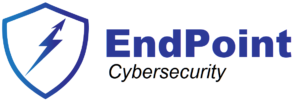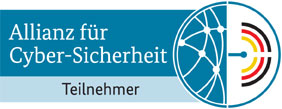Balancing functionality and privacy concerns in AI-based Endpoint Security solutions
The integration of Artificial Intelligence (AI) in endpoint security has revolutionized the way organizations protect their devices and data.
Ok, let’s take a break here: have you read the article about Artificial Intelligence vs. Machine Learning ?
By leveraging AI and machine learning models that analyze user behavior on devices, organizations can detect anomalies and potential security threats more effectively.
However, this advanced approach to endpoint security raises significant privacy concerns, as it necessitates the collection of user activity data, sometimes in real time.
One thing needs to be clear: if you want to do anomaly detection, you need to train your ML model with what “normal” is first – this is called “baseline”. And this means that data needs to be collected from the user.
Now the question remains, how can we reduce the privacy concerns?
This short article explores the privacy challenges I think are associated with using AI models that require user data(behavior), discusses potential solutions, and suggests ways to deploy AI on devices while minimizing privacy concerns.
What are the privacy concerns when data is collected for training an ML model?
Data Collection and Usage
Collecting user data for AI-driven endpoint security involves monitoring and logging user activities on devices.
This process includes:
- capturing information about the applications used (URLs accessed, CPU usage, memory usage),
- websites visited and items clicked
- files accessed
- applications installed
- applications started
- time of login, logout, inactivity
- webcam usage
- microphone usage
- biometrics
This data is essential for creating baselines of normal behavior and identifying deviations that might indicate security threats.
This extensive data collection raises concerns about user privacy, as it creates a comprehensive profile of a user’s digital activities.
AI-based endpoint security solutions can infer or predict sensitive information from non-sensitive forms of data, such as user preferences, interests, or behaviors.
This can enable the systems to provide personalized or customized services or recommendations, but it can also violate the privacy or autonomy of the users or the owners of the devices or networks.
For example, someone’s keyboard typing patterns can be analyzed to deduce their emotional state, which includes emotions such as nervousness, confidence, sadness or anxiety
Data Security
Safeguarding the collected user data is critical, as it contains sensitive information about an individual’s online behavior.
The risk of data breaches or unauthorized access to this information poses a significant privacy threat.
Where is this data stored, how long, how is it stored, who has access to it, how is it going to be used/processed and by who, are just a few questions that need to be asked.
GDPR has made clear which are the responsibilities of the controller and processor(s) of the data.
Transparency and Consent
A good user experience of a security product means that users will be as unaware as possible that their activity data is being collected for security purposes.
Ensuring transparency and obtaining explicit user consent for data collection is critical. Without clear communication, users may feel their privacy is being violated.
Data Retention
Storing user data indefinitely can compound privacy concerns. Organizations should establish clear data retention policies, specifying how long the data will be retained and under what circumstances it will be deleted.
User Profiling and Discrimination
The detailed user activity data collected for AI analysis can lead to user profiling, which may be used for purposes beyond cybersecurity, such as targeted advertising.
AI-based endpoint security solutions can make automated decisions or recommendations based on the data they analyze, such as blocking access, flagging anomalies, or prioritizing alerts.
Discriminatory decisions and practices can arise from the insights drawn from user behavior data. However, these decisions or recommendations can be discriminatory, unfair, inaccurate, or biased, if the data or the algorithms are flawed, incomplete, or skewed.
For example, people can be misclassified, misidentified, or judged negatively, and such errors or biases may disproportionately affect certain demographics.
Solutions to address privacy concerns
The solutions to address these concerns are actually not new, they are covered pretty good by the GDPR and other privacy laws world-wide.
They are :
Data Minimization
Organizations should adopt a data minimization approach, collecting only the data necessary for security purposes. This is definitely not as easy as it sounds.
In Security, you usually collect as much as possible, because the more you know about your target, the better it is for the ML model (better detection, less false positives).
However, the Compliance dept. should be involved from the early stages of developing the product in order to control what is being collected.
Anonymization
Anonymizing user data can be a privacy-enhancing technique. By removing personally identifiable information from collected data, the risk of individual users being identified is reduced.
This works good when data is collected from many computers, but when the solution works on a single computer, it usually needs time to “learn” the user’s behavior.
There is nothing anonymous there and this is usually OK, as long as this data is not sent to the backend for further processing and analysis.
Encryption
Encrypting the data collected for AI analysis ensures that even if a breach occurs, the information remains unreadable and inaccessible to unauthorized parties.
When “cleaned up” data needs to be sent, it is mandatory to send it encrypted and keep it at rest encrypted all the time.
Informed consent
Transparently informing users about data collection and obtaining their explicit consent is a fundamental step in addressing privacy concerns.
Users should have the option to opt in or out of data collection at any time. It is mandatory for the ML models to be able to cope without any datasets, because they could disappear at any time.
Data deletion
After the data is no longer needed for security analysis, organizations can ideally erase the data, and if this is not possible, then it should remove any direct or indirect associations with individual users.
Balancing Security and Privacy
Balancing AI-based endpoint security and privacy is essential. Organizations can adopt the following strategies to minimize privacy concerns:
- Implement Strong Privacy Policies
Establish comprehensive privacy policies that clearly define data collection, usage, retention, and disposal procedures. These policies should adhere to legal and regulatory requirements for the region where the users reside (GDPR, CPA, etc.).
This can by itself be a challenging task, because no company is willing to block access to potential customers.
- Regular risk assessment and impact analysis
Conduct periodic risk assessment and impact analysis to ensure that data collection and analysis practices align with privacy policies and legal requirements and correct any deviations promptly.
The audits should be first performed internally, in order to have time to fix any deviations. If an external audit body finds any irregularity, the company can be fined with large sums of money.
- Third-Party Vetting
When using third-party AI solutions, organizations should thoroughly vet the security and privacy practices of these providers.
- Ongoing Monitoring
Continuously monitor the effectiveness of privacy protection measures and adjust them as needed to address emerging privacy concerns.
Conclusion
AI-based endpoint security is a powerful tool for protecting devices and data from cyber threats. However, it should not come at the cost of user privacy or well-being.
Organizations must strike a delicate balance by implementing privacy-enhancing measures, obtaining informed consent, and adhering to transparent data collection and usage practices.
The post Balancing functionality and privacy concerns in AI-based Endpoint Security solutions first appeared on Sorin Mustaca on Cybersecurity.



